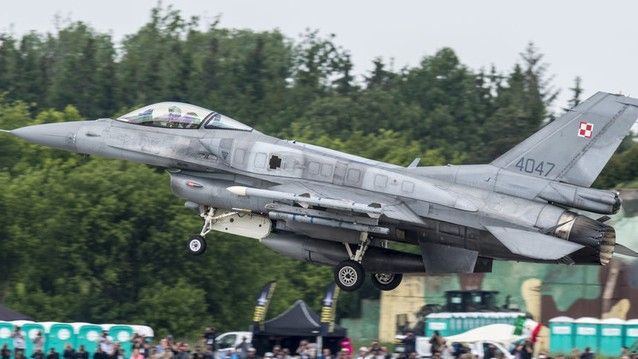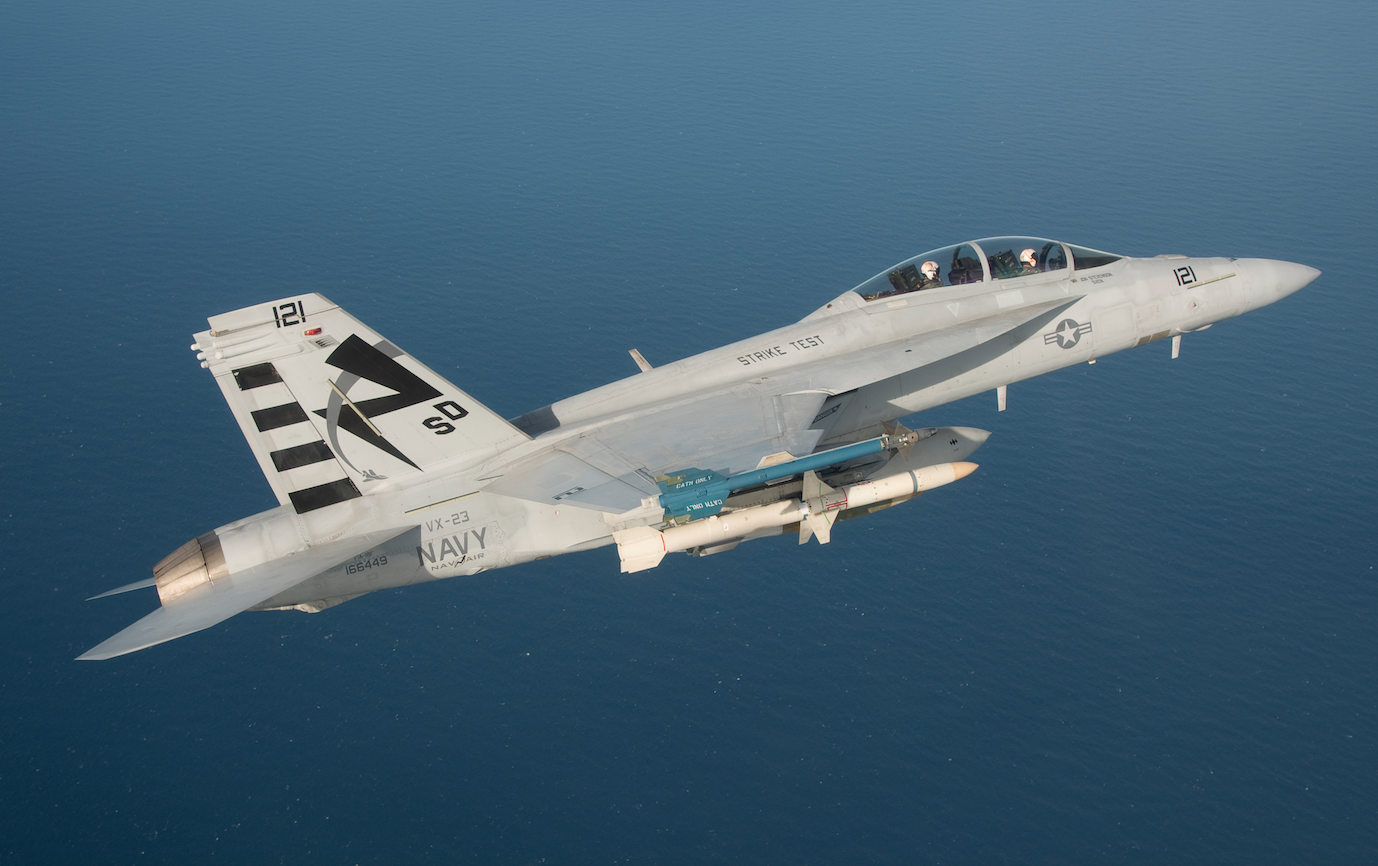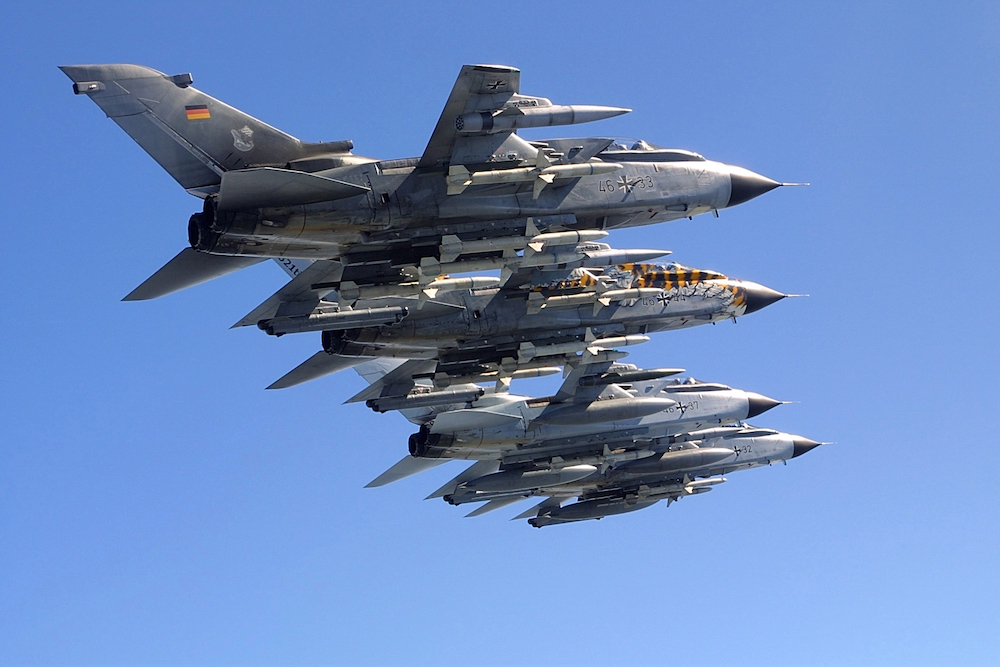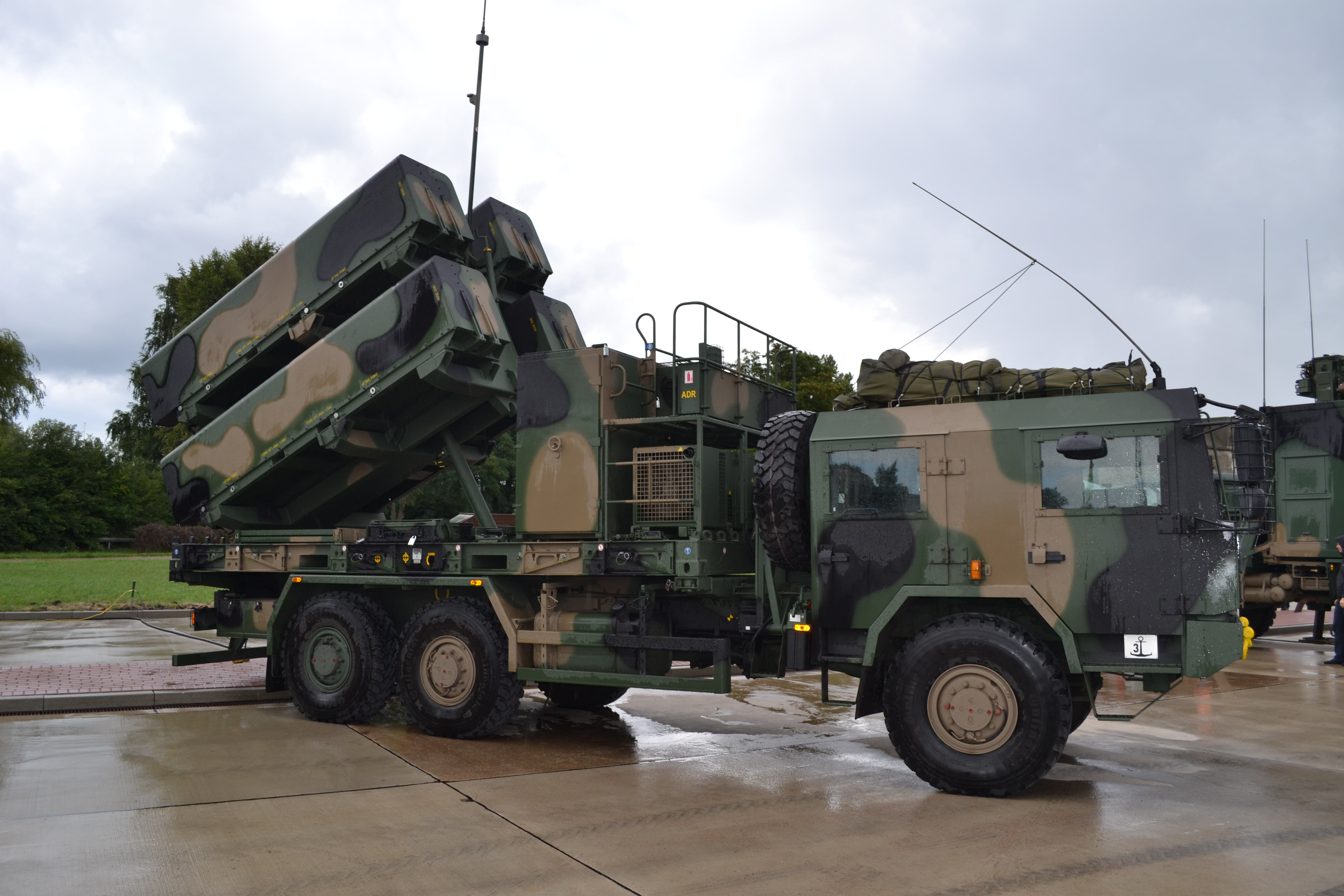AARGM for Poland in Two Phases?

Ministry of National Defence (MOND) plans acquisition of AARGM anti-radiation missiles for F-16 fighters, most probably also – their modernized version – for the new generation ”Harpy” program fighter jets. Acquisition of this type of armament could possibly be completed in two phases. This would enable gradual enhancement of capabilities to defeat enemy’s air defence.
Pentagon recently ordered another batch of AARGM anti – radiation missiles. Contract regarding these missiles, attained through modernization and upgrade of existing AGM-88B HARM, was signed at the end of July (2019). US Department of Defense (DoD) announced that contract presumes delivery of 260 combat and 3 training missiles by March 2022. The order value amounts for USD 167,3 million. It is the eighth batch of AGM-88E AARGM missiles procured by US Armed Forces in terms of Full – Rate Production (FRP). The first FRP order was placed in August 2012.
According to US DoD Budget Requests forecast for fiscal year 2020, next AARGM serial production orders are to be placed until fiscal year 2023. In total, Pentagon intends to contract twelve batches of missiles. Also, international users of AARGM are acquiring these missiles through following production lots.
Until now these missiles were procured by Italy, which has been participating in the program since its beginning. Also, Australia decided to acquire AARGM missiles through Foreign Military Sales (FMS). At the end of June (2019) Germany obtained the State Department approval to procure AARGM through NATO Support & Procurement Agency (NSPA). Berlin is to pay not more than USD 122,86 million for 91 combat and 8 training missiles.
AARGM missiles are created by conversion of existing AGM-88B/C HARMs. They receive a new guidance system with digital, passive guidance head, active millimeter wave radar and INS / GPS navigation systems, as well as new control systems. It makes it possible to engage not only radar stations (even not emitting and already moving), but also other, non-radar targets if they coordinates are known. At the same time AARGM uses such elements as airframe and propulsion system of HARM missiles. Out of three above mentioned countries Italy and Germany are current HARM’s users, so that acquisition is completed through utilization and conversion of missiles from own armories. Australia, as not been previously HARM user, has to buy legacy Harm missiles for the AARGM conversion.

Poland also plans acquisition of AARGM missiles. As MOND informed, even in September 2018, funds for this task have been included into financial forecast (perspective) by 2026. MOND also informed it submitted the Letter of Request for Price and Availability, regarding both AARGM as well as AARGM-ER missiles. It means that Poland has been interested in acquiring conventional AARGM missiles and their new version, designed for carrying them inside internal weapon bays of 5th generation fighter jets. AARGM-ER will use guidance system similar to existing AARGM, but the design of the airframewill be changed. It will more than double its range. The missile will also receive the new propulsion system, which will allow to reach its extended range at the same time of flight as AARGM.
So far AARGM – ER has been under development, going through Engineering & Manufacturing Development (EMD) phase which is scheduled to be concluded in 2023.
The implementation contract includes, amongst others, integration on F-35A/C and F/A-18E/F Super Hornet and also EW aircraft E/A-18G Growler. AARGM-ER for US Navy is to achieve its initial operational readiness in 2023. It is possible thanks to the fact that the first batch, deriving from Low Rate Initial Production (LRIP) will be ordered even in 2021, still under R&D, and be delivered in 2023.
US Air Force joined AARGM-ER program, to utilize this missile in Stand in Attack Weapon (SiAW) program. It is the new system designated to engage strongly defended targets, including elements of air defence systems, but also electronic warfare means or ballistic missiles launchers of a potential adversary. SiAW will be based on AARGM-ER design, but be equipped with new components eg. warhead or propulsion. The Drive website informed that AARGM-ER / SiAW missiles are to achieve operational capability on US Air Force F-35A fighters around 2025.
AARGM for Poland – purchase process?
The US government requires AARGM to be procured through Foreign Military Sales program. It means that AARGM missiles should be manufactured in the same production batches as those to be delivered to US. Thus, the purchase of standard AGM-88E missiles– together with Pentagon – will be possible in the years 2020 – 2023. Before that Poland will have to submit respective request, obtain approval from US Department of State and Congress, then negotiate and sign the intergovernmental agreement (Letter of Offer and Acceptance), which will constitute the basis of Pentagon’s purchase order for Poland.
Practically Congressional notification process and preparation of intergovernmental agreement may last from several to over a dozen months. At the same time – in case of AARGM missiles procurement – Poland will have to obtain in advance adequate number of AGM-88B/C HARM missiles, which will be further converted. These missiles could be purchased from US Navy or other users’ excess armament stocks.

All above clearly indicate that prior to signing the possible agreement to include Poland into one of AARGM serial production and delivery batches, numerous steps have to be taken in advance. There is increasing number of countries interested in this type of missiles in Europe as well as in Middle East, due to evolving air defence threats from various potential adversaries. It can be easily assessed that time from beginning of production (conversion of existing missiles) to achievement of initial combat readiness is about 3 years. If the intergovernmental agreement was concluded by 2020, Polish F-16 fighters could achieve initial combat readiness by 2023.
At the same time AARGM-ER missiles are still under research and development phase, what makes access to this system more difficult. By default, armament systems available for FMS derive from full rate serial production. This provision could possibly be repealed in terms of special ”yockey waiver” procedure, which was used for Poland’s acquisition IBCS air defense management system in Wisła program.
As far as AARGM-ER is concerned, this system will probably achieve the full rate production in the middle of next decade. Beginning of Low Rate Initial Production
(LRIP) is planned – according US DoD budget forecast for 2020 – in fourth quarter of fiscal year 2023, what means third quarter of calendar year 2023. Equipment manufactured under LRIP has to be tested and, in the following step, approved for full rate production. AARGM-ER must be integrated with F-35A fighters. International timelines usually predict operational readiness normally 5 plus years after the US Services (AF, Navy, USMC) obtain operational readiness. Considering the above, it will be difficult to expect AARGM-ER achieving operational readiness in Poland before 2030.
Ways of system employment
Introduction of anti-radiation missiles will require Polish Air Force to take series of activities, preparing for implementation of this type of armament and broader for suppression / destruction of enemy’s air defence (SEAD / DEAD) missions. For example, US Air Force in Europe assigned 480 Fighter Squadron – deployed to Spangdahlem Germany and armed with F-16C/D fighter jets – with “Wild Weasel” role. Nota bene, airmen from this squadron recently trained with Polish F-16 pilots, during Aviation Detachment exercise. However, AARGMs ability to detect, build track files, and display this information in the cockpit makes its implementation significantly easier than previously designed systems.
Pilots responsible for breaking through the adversarial air defence prepare themselves to employ special tactics, enabling detection and destruction of enemy’s air defense missile batteries, while at the same time they avoid destruction by other air defence elements. Carrying out intelligence / reconnaissance and gathering threat information has special significance. This process is already taking place in peacetime, through detection of electromagnetic emissions of a potential adversary, by different reconnaissance means. Certainly threat databases can and should be maintained within allied cooperation.
In Poland this capability will have to be built basically from the scratch. Polish Air Force used to have Ch-25 anti – radiation missiles on SU-22M4 fighter – bombers, but they were complete different generation. They were also designed against different air defence systems, comparing with those which today can be perceived as possible
threat to Polish military aviation, meaning such Western old generation systems as MIM-23 Hawk and MIM-14 Nike Hercules.
So, after taking a decision on introduction of anti- radiation missile Polish Air Force will has to build the entire system, enabling capability to utilize their entire operational potential. AARGM missile, due to their ability to transmit data from sensors to pilots as well as use of other sensors (millimeter wave radar, INS/GPS), ensures broader capability to cooperate with other combat systems.
For example: after AARGM’s sensors detect the position of enemy’s radar, pilot could transmit this information to higher echelon of command and control system, thus possibly contribute to the coordinated strike, with use of different types of precision engagement weapon systems. Not only against land targets, but also naval vessels.

Polish Air Force as well as Navy use subsonic cruise weapon systems (respectively JSOW, JASSM and NSM, RBS – 15) while AARGM is capable to fly with supersonic speed. So, it can be complementary to existing precision strike weapons. Certainly, full employment of this system’s capabilities requires preparation and exercising of applicable procedures as well as adequate data transmission system.
A possible fielding of existing AARGM system could allow to obtain a capability to degrade the adversarial air defence. Even today, a portion of Polish territory is within the range of Russian A2/AD system, including the air defence system. Fielding of AGM-88E AARGM would also allow to start integration of the anti-radiation system with other assets, further increasing the capability and creating a foundation to expand it by fielding the new generation system.
In turn, AARGM – ER, together with the new generation fighter jet F-35 and IBCS combat management system, could become an integral element of the joint fire system. In USA the capability of F-35 cooperation with IBCS has already been demonstrated, in regard to transmission of aerial target’s acquisition data to ground based defence systems. Defence 24 got to know unofficially that integration of IBCS with AARGM – ER has currently been thoughtfully considered. At the same time Northrop Grumman has been working on the concept development, regarding surface based launchers for AARGM as well as for new long range missiles.
In this case F-35 fighter could play the “sensor’s” role for surface based Ground-to Air and Ground-to Ground, detecting threats and using own armament carried inside weapon bays only when possible targets are located beyond the range of surface based launchers. The Drive website considers also use of AARGM family missiles on maritime combat vessels, and indicates possibility to design in the future the variant with larger warhead, able to strike battle ships.
Thus, AARGM – ER has a chance to become an universal missile to strike land and sea surface targets, launched from variety of platforms. Decisions on development of “surface” versions of AARGM – ER have not been taken yet, and before they will be introduced into the service, development of the origin missile and its integration and certification on various platforms must be completed, and also export approvals by the US Government will be required. So far, conventional AARGM are in serial production and they are firstly available for possible international users, and the US Government has already granted permissions to export it to several countries, like Australia and Germany.

WIDEO: Defence24 Days 2025: Premier Defence & Security Conference in CEE